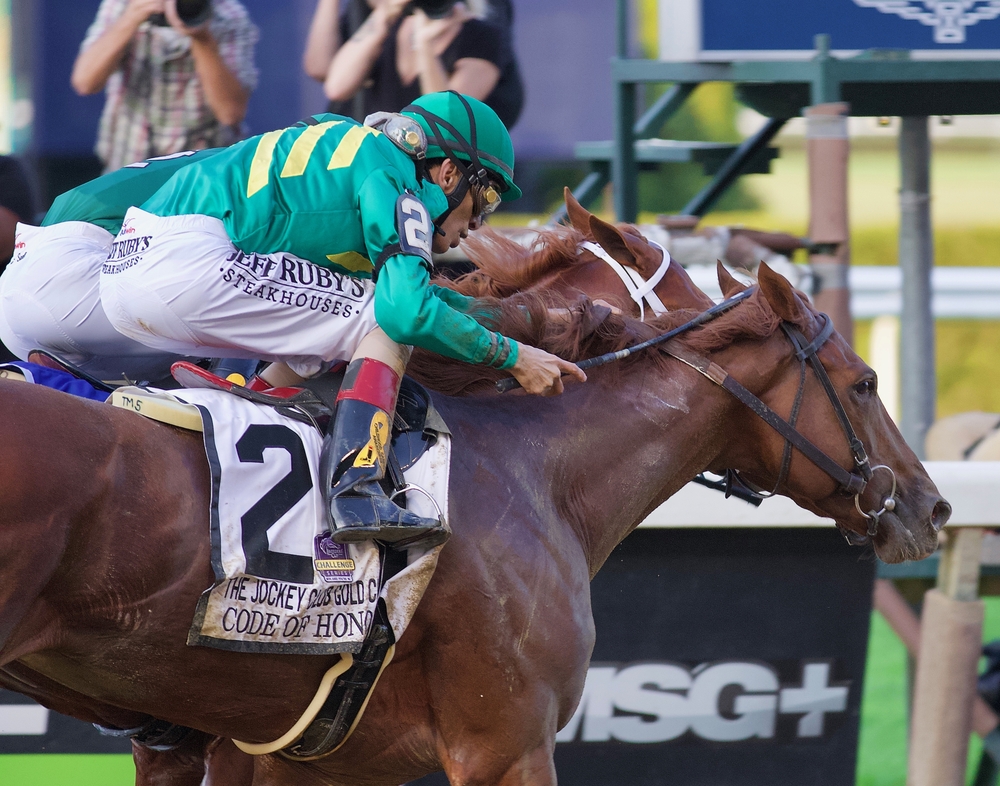Betting against the spread, commonly abbreviated as ATS, is a fundamental concept in sports wagering that differs from simple win-loss bets. Instead of merely selecting the victor of a contest, ATS betting involves a prediction on how a team will perform in relation to a sportsbook’s established point spread. The spread is essentially a handicap applied to one of the teams for wagering purposes to even out the odds, typically in favor of the underdog.
The appeal of ATS betting lies in its ability to level the playing field, creating a more balanced betting environment regardless of the teams’ perceived strengths or weaknesses. Point spreads add a layer of strategy to sports betting, as choosing the favorite requires the team to win by a certain number of points, while selecting the underdog provides a cushion which allows that team to lose the game by a margin smaller than the spread, or to win outright, for the bet to be won. Understanding how to effectively bet against the spread can make sports betting more engaging and potentially more profitable.
Key Takeaways
- ATS betting is a wager on a team to outperform the point spread set by bookmakers.
- Point spreads are used to equalize betting on mismatched teams by giving a virtual advantage to the underdog.
- Effective strategies improve ATS betting outcomes, and understanding point spreads is crucial to maximizing the potential of wagers.
The Basics of Betting Against The Spread
Betting against the spread, known as ATS betting, is a common approach in sports betting where bettors predict not only the winner but also the margin of victory or defeat. This method levels the playing field between unevenly matched teams, allowing for a more strategic wager.
Understanding the Point Spread
The point spread is a number set by bookmakers that serves as a margin of victory for the favorite team and as an advantage for the underdog. For a bet on the favorite to pay out, the team must win by more than the point spread. Conversely, an underdog bet succeeds if the team either wins outright or loses by less than the spread. For example:
- Favorite: New York Giants -7.5
- Underdog: Washington Football Team +7.5
For bets on the Giants to pay out, they must win by 8 points or more. If one bets on Washington, they must either win, or lose by 7 points or less.
The Role of Sportsbooks in ATS Betting
Sportsbooks play a crucial role in ATS betting—they set the initial point spread, adjusting it based on various factors such as betting patterns, injuries, and weather conditions. Their primary goal is to attract equal betting on both sides to minimize financial risk. The bookmakers use their expertise to gauge the strengths and weaknesses of the teams and to interpret public perception to create a line that will entice an equal action.
Betting Terms Defined
In ATS betting, several key terms are essential for bettors to understand:
- Bet: An amount of money placed on a particular outcome.
- Betting: The act of placing a bet on the outcome of a sporting event.
- Spread Betting: Wagering on the point spread.
- Sports Betting: Placing bets on various sports competitions.
- Against the Spread (ATS): Choosing the favorite to win by more than the point spread or the underdog to win or lose by less than the spread.
- Favorites: The team perceived to be most likely to win, denoted by a minus (-) sign next to the spread.
- Underdogs: The team perceived to be less likely to win, denoted by a plus (+) sign next to the spread.
- Bookmaker (or sportsbook): A company or individual that sets the odds and accepts bets.
Understanding these terms and how they apply to ATS betting is critical for making informed wagers in the sports betting landscape.
Placing an ATS Wager
When placing an ATS (Against The Spread) wager, a bettor typically considers the intricacies of the event at hand and the various factors that could influence the point spread. Through analysis and understanding, one aims to predict not just a win or loss, but whether a team will cover the spread set by the sportsbook.
Analyzing Sports Events
To effectively analyze a sports event for an ATS wager, one should examine recent team performance, including wins, losses, and how often they have managed to cover the spread in past games. It’s important to review head-to-head matchups and consider the impact of homefield advantage. Bettors often scrutinize player statistics, team injuries, and even weather conditions that could affect gameplay.
- Recent Team Performance: Wins, losses, and past spread records.
- Head-to-Head Matchups: Outcomes from previous encounters.
- Player Statistics: Key player contributions and potential game-changers.
- Team Injuries: Absences that could sway the game’s outcome.
- Weather Conditions: Elements that might influence play style and scoring.
Factors Influencing the Spread
The spread itself can be influenced by a myriad of factors, each of which should be considered before placing a bet:
- Public Betting Trends: If the majority leans heavily towards a particular team, sportsbooks may adjust the spread to balance the wagering.
- Team News: Announcements regarding team dynamics or lineup changes can cause shifts in the spread.
- Odds Movements: Shifts in the odds reflect the sportsbook’s risk management in response to the above factors.
Paying close attention to these details can offer bettors a better chance to accurately predict if a team will cover the spread, leading to a successful ATS wager.
Key Sports for ATS Betting
Against the Spread (ATS) betting is predominant in sports where scores are relatively high and the games are competitive enough to necessitate a point spread. The sports that most commonly use ATS betting include football, basketball, baseball, and hockey, allowing for more strategic wagers than a simple win/lose bet.
ATS in Football Betting
In football, both the NFL and college football games often feature ATS betting. The point spread is set by oddsmakers to even the playing field between teams, such as when the New England Patriots might be favored to beat an underdog by a specific number of points. Bettors can choose to bet on whether the Patriots will win by more than the spread or if the underdog will cover it.
Basketball and the Point Spread
Basketball, ranging from the NBA to college hoops, is another key sport where ATS betting is widely embraced. The point spread adds a layer of depth to betting, challenging bettors to decide if a team like the Golden State Warriors will outperform the set spread or not. This applies to both professional and college basketball games.
Baseball: The Run Line
For baseball, the equivalent of the point spread is known as the run line. The run line typically sets a 1.5-run spread for the favored team. A bettor might wager on the New York Yankees to win by more than 1.5 runs over their opponents or for the underdog to keep the game within that range.
Hockey’s Puck Line Betting
When it comes to hockey, the puck line functions much like baseball’s run line. Generally set at 1.5 goals, bettors might bet on the NHL‘s Chicago Blackhawks to win by more than the puck line, or conversely, for their opponents to stay within this spread. The puck line introduces an additional factor for hockey enthusiasts to consider when placing their bets.
ATS Betting Strategies
Betting Against the Spread (ATS) requires a thoughtful approach to leverage the odds in one’s favor. It’s essential that bettors develop a solid strategy, understand the margins provided by sportsbooks, and make informed decisions on when to bet on favorites or underdogs.
Short-Term Versus Long-Term Strategy
A short-term strategy in ATS betting focuses on immediate gains, often capitalizing on single-game insights or recent team performance. Bettors might make decisions based on current injuries or momentum, which can lead to quick payouts but with higher volatility. In contrast, a long-term strategy requires analysis of extended team records, league trends, and maintaining a consistent wagering approach. It’s a model that values consistent, gradual profit, where bettors track team performances over the season to identify patterns that can predict ATS success.
Understanding Margins in Sports Bets
Margins, or the edge sportsbooks incorporate into odds, are vital in ATS betting. They define the breakeven point that bettors need to surpass to achieve profitability. For example, with a standard -110 line, a bettor must win approximately 52.4% of their bets just to break even. Recognizing these margins pushes bettors to find value by analyzing when sportsbooks might underestimate a team’s chance at covering the spread, thus offering a favorable ATS wager.
When to Bet on Favorites versus Underdogs
Determining when to bet on favorites or underdogs requires an understanding of the point spread’s impact on a game’s outcome. Favorites typically have a track record of victory, but the spread can neutralize their advantage, making underdog bets more attractive if the spread is generous. On the other hand, a small spread suggests a closer contest, often providing value on the favorite, especially if they demonstrate a consistent ability to win games by wide margins. Bettors should weigh these factors, considering each team’s ATS record, to make informed decisions.
Calculating Payouts and Risks
In betting against the spread (ATS), understanding how payouts and risks work is crucial for making informed wagers. The payout reflects potential winnings, whereas risk involves the potential for loss.
Reading the Betting Line
To read a betting line, one must look for the favorite and underdog teams indicated by a minus (-) and plus (+) sign respectively, followed by a number. This number, known as the point spread, dictates the scoring threshold that the favorite must surpass to win the bet. For instance:
- New York Knicks -5.5
- Los Angeles Lakers +5.5
Bettors who place a wager on the Knicks would need them to win by more than 5.5 points to collect payouts. Conversely, Lakers backers win the bet if the Lakers either win outright or lose by 5 points or fewer.
The Importance of Odds in ATS Betting
Odds are pivotal in ATS betting as they determine the payout ratio. These odds can be displayed in American, Decimal, or Fractional formats. American odds, the most common in the U.S., look like this:
- Favorite: -110
- Underdog: +110
If the odds are -110, it means a bettor must risk $110 to win $100; for +110, a $100 bet would yield a $110 payout. ATS bets typically have odds around -110, signaling that while the risk is substantial, it offers more balanced payouts for both sides of the wager. Bettors must assess the odds to understand the potential return and the risk involved.
Advanced ATS Concepts
In the realm of sports betting, understanding advanced ATS (against the spread) concepts is essential for making informed wagers. This section delves into nuanced strategies such as examining player and team records, considering the influence of player injuries, and interpreting the implications of a push in ATS betting.
Leveraging Player and Team Records
When engaging in ATS betting, one must consider the historical performance of teams against the spread. For instance, the Dallas Cowboys might be favorites in the majority of their games but could have a record of only covering the spread 40% of the time. Bettors should analyze how teams perform against the spread under various circumstances, like home versus away games or divisional matchups.
Impact of Injuries on ATS Betting
The health and availability of key players can significantly sway a point spread. Bettor awareness of player injuries is crucial. A list of recent injuries could look something like this:
- Player: John Smith (Quarterback)
- Team: Dallas Cowboys
- Injury: Hamstring
- Status: Out
A key player being unexpectedly sidelined can shift the spread, offering potential value for bettors who are quickly able to adjust their betting strategies before the sportsbooks update their lines.
The Concept of the Push in ATS Betting
In ATS betting, a push occurs when the final point difference in a game equals the listed point spread, resulting in a tie with no winner or loser in the bet. For example, if a soccer match spread is set at 2 points and the favorite wins by exactly 2 points, all bets are returned. Bettors should be familiar with sportsbooks’ policies regarding pushes since they can impact bankroll management.
Choosing an ATS Betting Site
When engaging in ATS (Against the Spread) betting, it’s vital for bettors to select a sportsbook that offers competitive odds and low vigorish. The right choice can enhance the betting experience and improve potential returns.
Exploring Different Sportsbooks
A bettor must consider various sportsbooks before settling on one for ATS betting. Each sportsbook has its unique advantages and offerings.
- MGM Sportsbook: Known for its comprehensive coverage of sporting events and user-friendly interface.
- Caesars Sportsbook: Offers extensive betting options with competitive odds and often provides lucrative promotions.
Bettors should compare the ATS lines provided by different sportsbooks to ensure they’re getting the best value on their wagers. Paramount to this comparison are factors like the breadth of sports coverage, user experience, and bonus offers.
Understanding the Impact of Vig
The ‘vig’ or vigorish—also known as the juice—is the fee a sportsbook charges for taking a bet. It’s typically built into the odds and can affect the profitability of ATS betting.
- High Vig Example: -110 (bet $110 to win $100)
- Low Vig Example: -105 (bet $105 to win $100)
A lower vig can significantly impact a bettor’s long-term profitability. Therefore, bettors should seek out sportsbooks that offer lower vig, as this can mean more favorable returns on winning bets. For instance, Caesars Sportsbook may differ from MGM Sportsbook in terms of vig, which should be a key consideration when placing ATS bets.
ATS Betting in Other Markets
While ATS betting is commonly associated with sports wagering, the concept is similarly applied in different markets, including financial and commodities trading. In these sectors, ‘against the spread’ betting involves speculation on market movements rather than sports outcomes.
Financial Market Spread Betting
Financial market spread betting allows investors to speculate on the price movements of stocks without actually owning them. In this form, traders place bets on whether they think a stock’s price will rise or fall. Brokers offer a bid price and an ask price—the spread—and traders must predict if the stock will perform above or below this range. It’s a leveraged product, meaning traders can gain large exposure for a relatively small initial deposit. This can amplify profits but also losses.
Key Features:
- Leverage: Can control large positions with a small deposit.
- Tax Benefits: Profits are generally tax-free as they’re considered a bet, not an investment. This includes exemption from capital gains tax.
- Commission-Free: Most spread betting is commission-free, with costs built into the spread.
Exploring Commodity and Forex Spread Betting
Commodity and forex spread betting involves speculating on the price movements of various commodities and currency pairs. Like in financial markets, traders do not own the underlying asset and can profit in both rising (bull) and falling (bear) market conditions. They can bet on metals, energy products, agricultural goods in the commodities market, or on currency pairs in the forex market.
Subsectors:
- Commodities: Includes gold, oil, wheat, etc.
- Forex: Currency pairs like USD/EUR, GBP/JPY.
Critical Points:
- Bid and Ask Prices: Traders speculate on whether the commodity or forex pair will exceed or fall short of these prices.
- Leverage & Risks: High leverage can significantly increase both potential returns and potential losses.
Advanced Betting Techniques
In the realm of betting against the spread (ATS), advanced techniques such as arbitrage and the use of stop-loss orders can potentially optimize bettors’ strategies.
Employing Arbitrage in ATS Betting
Arbitrage betting capitalizes on the discrepancies between the point spreads offered by different sportsbooks, allowing a bettor to place multiple bets on all possible outcomes of an event and ensure a profit, regardless of the final result. This requires bettors to:
- Be vigilant in finding different point spreads with significant variation.
- Quickly act on these opportunities before they disappear.
- Mind the commissions: as they could diminish the profit margins.
For example, if one bookmaker has Team A at +3.5 and another has their opponent Team B at +4.5, a bettor could wager on both outcomes and profit if the final score lands within that spread.
Effective Use of Stop-Loss Orders
Stop-loss orders are designed to limit an investor’s loss on a position. In betting, they can be used similarly by setting a pre-determined level of loss that a bettor is willing to accept before exiting a position.
- Standard stop-loss orders: Trigger a sale when the bet reaches a certain level.
- Guaranteed stop-loss orders: Ensure closure at the specified level, regardless of market volatility, often requiring an additional fee.
By strategically placing stop-loss orders, bettors can shield their bankroll from significant downturns, though they need to factor in the potential costs associated with guaranteed stop-loss orders. It is critical that bettors set these levels with a clear understanding of their own risk tolerance and the likelihood of spread movement.
Frequently Asked Questions
Betting against the spread is a common strategy in sports betting that balances the odds between unevenly matched teams. It requires understanding how points are used to even the odds and affect betting outcomes.
How does betting against the spread work in sports betting?
In sports betting, betting against the spread means wagering on a team to either win by a certain number of points or to lose by fewer points than the spread. The spread is a point advantage set by oddsmakers to level the playing field.
What does it mean when a team is a -7 point favorite in betting?
When a team is a -7 point favorite, it means that they are expected to win by more than 7 points. Bettors who choose this team would need them to win by at least 8 points to win their bet against the spread.
In what ways does betting against the spread differ from covering the spread?
Betting against the spread involves placing a bet based on the point spread before a game. Covering the spread is a retrospective term that indicates whether the favorite team won by more points than the spread or the underdog lost by fewer points, or won the game outright.
Can you provide examples of how spread betting works in major sports like NBA and NFL?
In the NBA, if the spread is -5.5 for the Lakers against the Celtics, the Lakers must win by 6 points or more for a bet on them to pay out. In the NFL, if the Cowboys have a -3 spread against the Giants, they need to win by 4 or more points for their backers to win the spread bet.
How do positive spread numbers like +7 or +2.5 affect the betting outcome?
Positive spread numbers like +7 or +2.5 indicate the underdog’s position. If you bet on a team with +7, they can either win the game or lose by up to 6 points for your bet to win. A spread of +2.5 allows the team to lose by up to 2 points and still earn a win for the bettor.
What are the implications of a +3.5 spread on a wager in sports betting?
A +3.5 spread means the underdog team can lose by up to 3 points but still lead the better to a win on their wager. If the team loses by 4 or more points, the wager is lost. This type of spread bet gives the underdog a slight scoring advantage for betting purposes.





